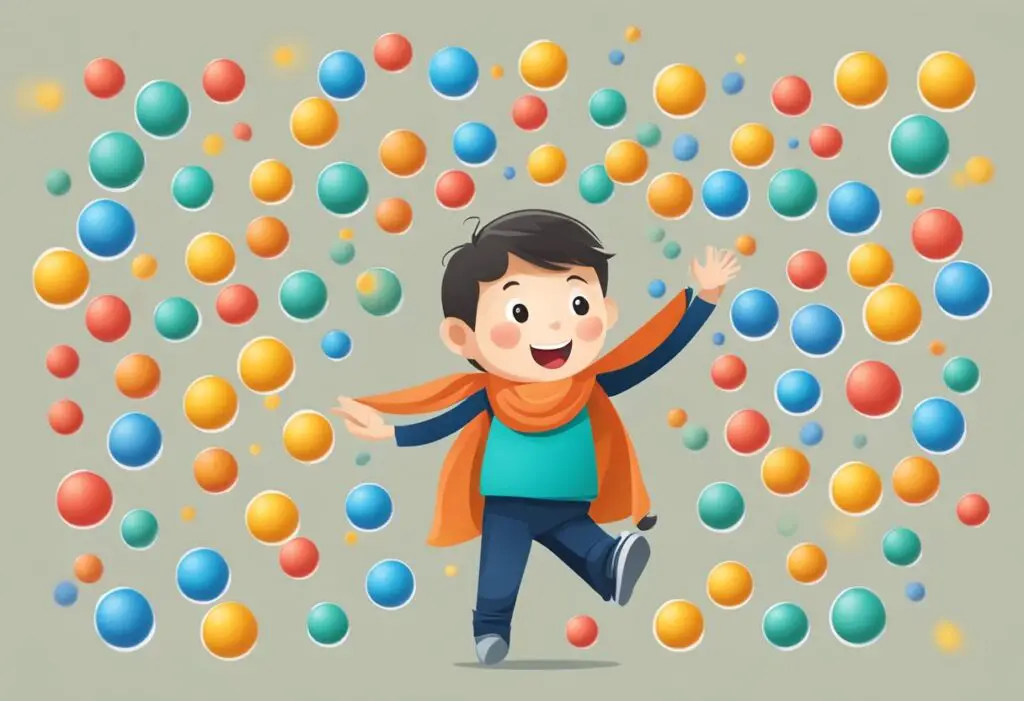You know how kids often get fixated on the end result and forget to enjoy the journey?
It’s easy to get caught up in the pressure to succeed and forget that learning is a process, not just a destination. That’s where embracing the learning process and continuous improvement comes in. By focusing on the process rather than just the outcome, kids can develop a growth mindset that will serve them well throughout their lives.

Embracing the learning process means recognizing that mistakes and failures are a natural part of the learning experience. Instead of getting discouraged, kids can learn to view mistakes as opportunities for growth and improvement. Continuous improvement means always striving to do better, even when you’ve already achieved success. It means setting goals, tracking progress, and making adjustments along the way to keep improving.
By teaching kids to embrace the learning process and continuous improvement, we can help them develop resilience, perseverance, and a lifelong love of learning. So next time your child is struggling with a difficult task or feeling discouraged by a setback, remind them that it’s all part of the process. Encourage them to focus on the journey, not just the destination, and to keep striving for improvement every step of the way.
The Adventure of Learning: More Than Just ABCs
Learning is not just about acquiring knowledge; it is about embracing the adventure of continuous improvement. As a parent or educator, it is important to foster a learning culture that encourages children to explore new things, take risks, and learn from their mistakes. In this section, we will explore the adventure of learning and the role of educators and families in fostering a culture of continuous improvement.
Fostering a Learning Culture
Fostering a learning culture starts with creating an environment that encourages children to take risks and learn from their mistakes. This means creating a safe space where children feel comfortable sharing their ideas and asking questions. It also means encouraging children to explore new things and try new experiences, whether it is through technology or hands-on lessons.
One way to foster a learning culture is by using technology to enhance the learning experience. Technology can help children learn in new and exciting ways, and can provide opportunities for personalized learning. For example, educational apps and games can help children learn math, science, and other subjects in a fun and interactive way.
The Role of Educators and Families
Educators and families play a critical role in fostering a learning culture. They can help children develop a love of learning by providing opportunities for hands-on exploration, encouraging curiosity, and celebrating successes.
-

Bold Male Pride – Baseball Trucker Cap Celebrating Masculinity
£18.00 Select options This product has multiple variants. The options may be chosen on the product page -

Dad Bod Appreciation Gift Mug
£14.00 Add to cart -

Dad Bod, Bad Jokes Structured Baseball Cap
£22.00 Select options This product has multiple variants. The options may be chosen on the product page
Education research shows that trust is an important factor in creating a positive learning environment. When children feel that their educators and families trust them, they are more likely to take risks and try new things. This trust can be built by creating a safe and supportive environment where children feel comfortable sharing their ideas and asking questions.
Continuous improvement is also an important part of the learning process. Educators and families can help children develop a growth mindset by celebrating progress and encouraging them to learn from their mistakes. By focusing on the process of learning, rather than just the outcomes, children can develop a love of learning that will last a lifetime.
In conclusion, the adventure of learning is more than just ABCs. It is about embracing the journey of continuous improvement, taking risks, and learning from mistakes. As a parent or educator, you can help foster a learning culture by creating a safe and supportive environment, using technology to enhance the learning experience, and encouraging children to explore new things.
When Failure is a Stepping Stone
Learning is a process, and failure is an essential part of it. When you’re trying something new, it’s natural to make mistakes. But don’t let those mistakes discourage you. Instead, embrace them as opportunities to learn and grow. Here are some tips for turning failure into a stepping stone towards success.
Celebrating Oops Moments
When you make a mistake, celebrate it! That might sound counterintuitive, but it’s a great way to shift your mindset from one of failure to one of growth. Instead of beating yourself up over your mistakes, acknowledge them and use them as a chance to learn. You can even create a “oops” jar where you put a dollar in every time you make a mistake. At the end of the month, use the money to buy a treat for yourself or your family.
Feedback and Adjustments
Feedback is essential to the learning process. When you receive feedback, take it as an opportunity to reflect on your work and make adjustments. Don’t take it personally or get defensive. Instead, use it as a chance to improve. You can also ask for feedback from others, such as your parents, teachers, or friends. They might see things that you don’t and provide valuable insights that can help you grow.
When you’re making adjustments, don’t be afraid to revise your work. It’s okay to go back and make changes based on what you’ve learned. That’s part of the problem-solving process. Remember, the goal is not perfection, but continuous improvement.
In conclusion, failure is not something to be feared or avoided. Instead, it should be embraced as a natural part of the learning process. By celebrating your oops moments and using feedback to make adjustments, you can turn failure into a stepping stone towards success.
The Scientific Side of Playtime
When it comes to learning, playtime is not just about having fun. In fact, there’s a lot of science behind it. Here are some ways that playtime can help kids improve and learn.
Improvement Science in Action
Improvement science is all about finding ways to make things better. And when it comes to education, there’s always room for improvement. That’s why many schools are using improvement science to find new and better ways to help kids learn.
One example of improvement science in action is using data to track progress. By collecting data on how well kids are doing, teachers can identify areas where they need to improve. Then, they can come up with strategies to help kids learn better.
Innovation and Experiments in Learning
Another way that playtime can help kids learn is through innovation and experiments. When kids are given the freedom to experiment and try new things, they can learn a lot. And when they’re encouraged to be innovative, they can come up with new and better ways to learn.
One example of innovation in learning is using games to teach. Games can be a fun and engaging way to learn new concepts. And when they’re designed well, they can be very effective.
Another example is using technology to enhance learning. For example, some schools are using virtual reality to teach kids about history. By putting them in a virtual world, kids can experience history in a way that’s much more engaging than just reading about it in a textbook.
Effective Schools and Improvement Strategies
Of course, none of this would be possible without effective schools and improvement strategies. Effective schools are those that are able to help kids learn and improve. And improvement strategies are the methods that schools use to make things better.
One example of an effective school is one that has a clear framework for learning. By having a clear framework, teachers and students know what they need to do to be successful. And by using improvement strategies, schools can continuously improve and find new and better ways to help kids learn.
In conclusion, playtime is not just about having fun. It’s also a valuable tool for learning and improvement. By using improvement science, innovation, and effective schools, we can help kids learn and grow in new and exciting ways.
Leadership and the Art of Juggling Expectations

Being a leader is not easy, especially when you are leading a group of kids. You have to juggle a lot of expectations, both from yourself and from others. But don’t worry, with a little bit of humor and a lot of trust, you can lead your team to success.
Leading with Laughter
Laughter is contagious and can help create a positive atmosphere. When you are leading a group of kids, it’s important to keep things light and fun. Don’t be afraid to crack a joke or two, even if they are bad. Kids appreciate a leader who can make them laugh.
Building High Expectations and Trust
As a leader, it’s important to set high expectations for your team. But you also need to build trust. Kids need to know that you believe in them and that you are there to support them. When you set high expectations and show that you trust your team, they will rise to the challenge.
One way to build trust is to be a positive deviant. This means that you set an example for others by doing things differently in a positive way. For example, if you notice that your team is struggling with a certain task, you can show them a new approach that might work better. When you lead by example, your team will be more likely to trust you and follow your lead.
Conclusion
Being a leader is not easy, but with a little bit of humor and a lot of trust, you can lead your team to success. Remember to set high expectations and be a positive deviant. Your colleagues will thank you, and your school will benefit from the improvement.
The Classroom Ecosystem: Thriving in a World of Change
As a teacher, you know that the classroom is an ecosystem. Just like a natural ecosystem, the survival of a classroom ecosystem depends on the constant transfer of energy between organisms. Plants, the primary producers of energy on Earth, harness energy from the sun. In a classroom ecosystem, students are the primary producers of energy. They are the ones who generate the ideas and the questions that drive learning forward.
To thrive in a world of change, your classroom ecosystem needs to be healthy. Just like a natural ecosystem, a healthy classroom ecosystem requires continuous improvement and collective effort. It also requires transparency and buy-in from all members of the ecosystem.
Continuous Improvement and Collective Effort
Continuous improvement is a Lean principle that can be applied to the classroom ecosystem. It means that you and your staff are always looking for ways to improve the learning experience for your students. This can be done through small changes, such as tweaking a lesson plan, or through larger changes, such as implementing a new teaching strategy.
To achieve continuous improvement, you need to foster a culture of collective effort. This means that everyone in the classroom ecosystem is working together towards a common goal: to improve the learning experience for your students. When everyone is working together, you can achieve great things.
Transparency and Buy-In
Transparency is essential in any healthy ecosystem. In a classroom ecosystem, transparency means that everyone is aware of what is going on. This includes students, parents, and other members of the community.
To achieve transparency, you need to communicate openly and honestly with everyone in the ecosystem. This means sharing your goals, your challenges, and your successes. When everyone is on the same page, it is easier to work together towards a common goal.
Buy-in is also essential in a healthy classroom ecosystem. Buy-in means that everyone in the ecosystem is committed to the goals of the ecosystem. This includes students, parents, and other members of the community.
To achieve buy-in, you need to involve everyone in the ecosystem in the decision-making process. This means listening to their ideas and concerns and incorporating them into your plans. When everyone feels like they have a stake in the ecosystem, they are more likely to be committed to its success.
In conclusion, to thrive in a world of change, your classroom ecosystem needs to be healthy. This means focusing on continuous improvement and collective effort, as well as transparency and buy-in. By following these principles, you can create a classroom ecosystem that is resilient and adaptable to change.







